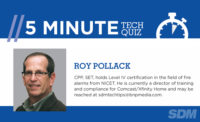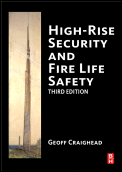Test your Life Safety System Testing knowledge with the following quiz.
All answers may be found in NFPA 4.
Bonus Questions
- The Standard for Integrated Fire Protection and Life Safety System Testing was first introduced when?
- When NFPA 3 was first introduced, it was not considered a standard. What was it?
Click here to see the answer.
The concept for NFPA 4 first appeared in a Chapter 7 of NFPA 3, 2012 edition. Both the 2012 and 2015 editions of NFPA 3 were recommended practices. The technical committee decided that the idea of commissioning and testing be broken out into two separate documents. NFPA 4 was then created by removing Chapter 7 of NFPA 3 in 2015.








